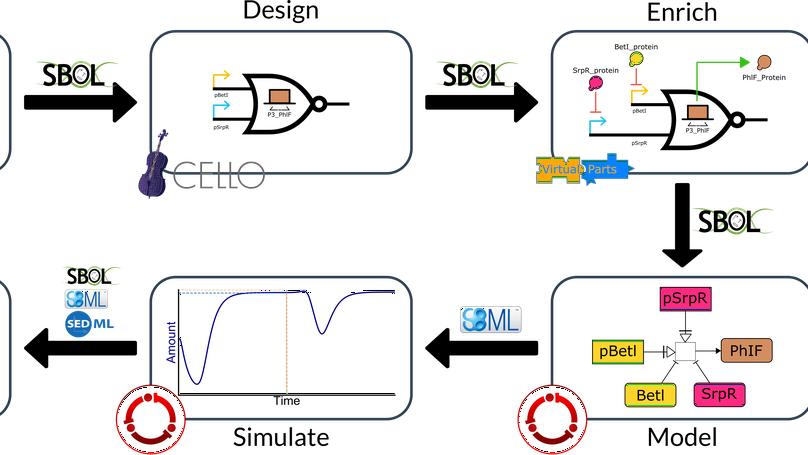Pedro Fontanarrosa
Graduate Researcher in Synthetic Biology
University of Utah - BioMedical Engineering
Biography
Pedro Fontanarrosa is a Ph.D. student at the University of Utah studying Biomedical Engineering. His current research is on the design, modeling, and analysis of genetic regulatory networks (i.e., genetic circuits), focusing on predicting and analyzing circuit failures and developing methods for the re-design of genetic circuits to avoid these circuit failures.
Download my resumé.
- Synthetic Biology
- Design, Model, & Simulation of Genetic Regulatory Networks
- Hazard and Glitch Analysis
- Consortium Genetic Logic Synthesis and Modeling
- Genetic Circuit Failures
Ph.D. in BioMedical Engineering, Present
University of Utah
M.S. in Bioengineering, 2019
University of Utah
M.S. in Evolutionary Biology, 2014
Universidad de Buenos Aires
BSc in Biological Sciences, 2009
Universidad de Buenos Aires
Skills
90%
100%
10%
Experience
Responsibilities include:
- Analysing
- Modelling
- Deploying
Accomplishments
Recent & Upcoming Talks
Featured Publications

Multiple input changes can cause unwanted switching variations, or glitches, in the output of genetic combinational circuits. These glitches can have drastic effects if the output of the circuit causes irreversible changes within or with other cells such as a cascade of responses, apoptosis, or the release of a pharmaceutical in an off-target tissue. Therefore, avoiding unwanted variation of a circuit’s output can be crucial for the safe operation of a genetic circuit. This paper investigates what causes unwanted switching variations in combinational genetic circuits using hazard analysis and a new dynamic model generator. The analysis is done in previously built and modeled genetic circuits with known glitching behavior. The dynamic models generated not only predict the same steady-states as previous models but can also predict the unwanted switching variations that have been observed experimentally. Multiple input changes may cause glitches due to propagation delays within the circuit. Modifying the circuit’s layout to alter these delays may change the likelihood of certain glitches, but it cannot eliminate the possibility that the glitch may occur. In other words, function hazards cannot be eliminated. Instead, they must be avoided by restricting the allowed input changes to the system. Logic hazards, on the other hand, can be avoided using hazard-free logic synthesis. This paper demonstrates this by showing how a circuit designed using a popular genetic design automation tool can be redesigned to eliminate logic hazards.
Recent Publications
Contact
- pfontanarrosa@gmail.com
- 888 888 88 88
- 36 S. Wasatch Drive, Salt Lake City, UT 84105
- Enter Building 1 and take the stairs to Office 200 on Floor 2
- Monday to Friday 10:00 to 18:00
- DM Me
- Telegram Me


